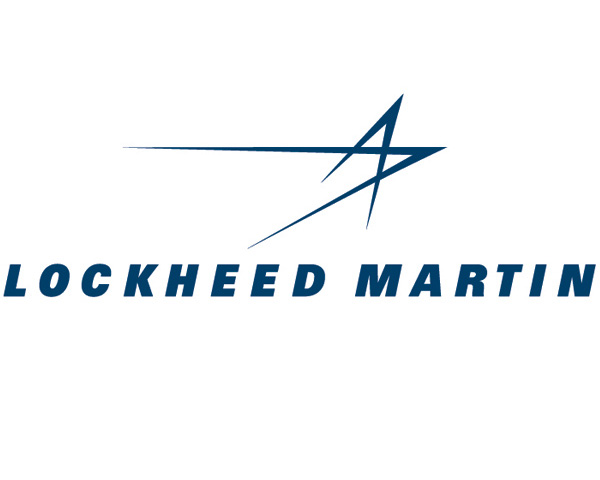Oil and gas industry groups asked the U.S. Supreme Court to strike down state subsidies for economically struggling nuclear power plants. Dailycaller.com
Blog
-

Geiger Readings for Feb 12, 2019
Ambient office = 128 nanosieverts per hour
Ambient outside = 135 nanosieverts per hour
Soil exposed to rain water = 137 nanosieverts per hour
Avocado from Central Market = 89 nanosieverts per hour
Tap water = 59 nanosieverts per hour
Filter water = 54 nanosieverts per hour
-

Radioactive Waste 379 – U.S. Department of Justice Sues Madison Support Alliance For Kickbacks At The Hanford Reservation
The Hanford Nuclear reservation in south central Washington State was used by the U.S. government to manufacture nuclear weapons from the Fifties through the Eighties. They left behind over a hundred tanks filled with toxic and radioactive materials that are leaking into the soil and scattered radioactive buildings. The Department of Energy is supposed to be cleaning up the mess, but they have been repeatedly sued by Washington State for endangering workers and failing to meet agreed upon schedules for phases of the cleanup plan. Now the DoE is suing a major contractor hired to carry out the cleanup.
The Madison Support Alliance (MSA) has a ten year three billion dollar contract signed in 2010 with the DoE to decontaminate the Hanford Reservation. Lockheed Martin Corporation (LMC) and Lockheed Martin Services Inc. (LMSI) were subcontractors hired to help at Hanford by MSA which is co-owned by another Lockheed Martin subsidiary.
MSA’s contract with the DoE was to provide management and technology services to the Department and other contractors involved in the massive cleanup project across the Hanford site. MSA says that it provides emergency response and training. It also provides environmental and land management, water and electrical utilities, cybersecurity and information management.
The U.S. Department of Justice claimed this week in court in the Eastern District of Washington that MSA abused its authority to hire subcontractors by awarding “improper favorable treatment” to some for kickbacks. The DoJ lawsuit alleges that LMC and LMSI executives received a million dollars from LMC and LMSI in violation of the Anti-Kickback Act to award a two hundred and thirty two million dollar contract for work at Hanford. LMC and LMSI then inflated the rates for the work they were subcontracted to do. In some cases, the two each billed MSA for the same work.
Jorge Francisco Armijo served as both the Vice President of LMC and the President of MSA. He was charge in the DoJ suit with abusing his authority for financial gain by holding posts in both companies at once. The DoJ suit said that Armijo “knowingly made or caused false statements to the DOE regarding the amount of profit included in the billing rates for LMSI under the subcontract it was awarded by its affiliate, MSA.” The DoJ also claims that the inflated rates violated the False Claims Act.
Jody Hunt is Assistant Attorney at the DoJ Civil Division. She said, “Where Congress has allocated money for specific purposes, we will not tolerate unlawful conduct by contractors who seek to enhance their profits at the expense of taxpayers.”
Joseph Harrington is the U.S. Attorney for the Eastern District of Washington. He said, “The critical mission of cleaning up the Hanford Site in a safe, timely, environmentally responsible, and cost-effective manner is too important to the public and the residents of this region. …fraudsters (will be held) accountable, whether they are individuals, businesses, or the nation’s largest corporations.”
Lockheed immediately denied the allegations. They rejected any notion that the “corporation or its executives engaged in any wrongdoing.” MSA also denied the charges and went on to say that “We look forward to presenting a strong defense in this matter, and as always, we stand behind our team of incredible employees to perform extraordinary work supporting the Hanford mission. Ethical business conduct is a hallmark of MSA and we are committed to integrity and compliance throughout all levels of the company.” -

Geiger Readings for Feb 11, 2019
Ambient office = 106 nanosieverts per hour
Ambient outside = 108 nanosieverts per hour
Soil exposed to rain water = 108 nanosieverts per hour
Potato from Central Market = 80 nanosieverts per hour
Tap water = 104 nanosieverts per hour
Filter water = 84 nanosieverts per hour
-

Geiger Readings for Feb 10, 2019
Ambient office = 139 nanosieverts per hour
Ambient outside = 105 nanosieverts per hour
Soil exposed to rain water = 106 nanosieverts per hour
Garlic bulb from Central Market = 100 nanosieverts per hour
Tap water = 91 nanosieverts per hour
Filter water = 83 nanosieverts per hour
-

Geiger Readings for Feb 09, 2019
Ambient office = 119 nanosieverts per hour
Ambient outside = 90 nanosieverts per hour
Soil exposed to rain water = 97 nanosieverts per hour
Anaheim pepper from Central Market = 66 nanosieverts per hour
Tap water = 76 nanosieverts per hour
Filter water = 60 nanosieverts per hour
Dover sole – Caught in USA = 108 nanosieverts per hour
-

Radioactive Waste 378 – Germany Has To Deal With Nuclear Waste Stored In The Old Asse Potash Mine
Following the Fukushima nuclear disaster in March of 2011, Germany made a commitment to shut down all of its nuclear power reactors. Eight of the seventeen nuclear power reactors in Germany have now been shut down and the rest are scheduled to be shut down by 2022. While Germany will no longer be generating electricity from nuclear power after 2022, it will take decades to deal with the legacy of nuclear power in the form of spent nuclear fuel and other radioactive wastes.
For decades, a variety of nuclear wastes have been stored in the old Asse potash mine over fifteen thousand feet beneath the northern Germany state of Lower Saxony. Low to medium level nuclear waste was carelessly dumped in the old mine in the 1960s and 1970s. Following that, the storage was more organized. Most of the waste is from nuclear reactors but there are also some radioactive wastes from hospitals and research facilities. Questions have been raised but not definitively answered about whether there may be high level nuclear waste in the mine. Currently, there are one hundred and twenty-six thousand barrels of radioactive waste stored in the Asse mine.
Potash mining at Asse was shut down in 1965. Until the end of the 1970s, radioactive materials were placed in the mine ostensibly for “research purposes” but the mine was a really repository. The mine has been deteriorating for a long time. About thirty-five hundred gallons of water flow into the tunnels of the mine every day.
In 2010, a decision was made to remove the barrels of waste from the mine. There is a danger that the mine could collapse and allow the radioactive wastes to come into contact with the groundwater in the area. The old shafts and layout of the Asse mine do not meet the current legal standards for storing nuclear materials.
It was estimated that it would cost at least a billion dollars to clean out the mine. However, many experts have expressed doubts that it will be possible to recover all the barrels from the old mine shafts. Germany founded a federal company called Bundesgesellschaft Für Endlagerung (BGE) for radioactive waste disposal in 2016.
Thomas Lautsch is one of the experts at BGE. He told the visiting German Environment Minister Svenja Schulze on a recent tour of the mine, “We would have to build a retrieval mine, which is more than simply just a new shaft. We would also need an interim storage facility for the waste, and we would have to create many new shafts to gain access to the individual chambers. By about 2024, we have to start construction.” He added that he expected the construction phase of the project to take eight or nine years.
In essence, an entirely new mine will have to be developed around the old mine in order to just retrieve the barrels of waste. If everything goes according to plan, removal of the barrels could begin in 2033. Schulze admits that this timeline for removal of the barrels is much longer than desirable. But, she said that safety must be considered as well as speed. It will be revealed over the next few years whether or not a safe and speedy extraction of the barrels of waste at the Asse mine is even possible.
